Stunning Hosta Companion Plants That Will Make Your Garden Pop
Stunning Hosta Companion Plants That Will Make Your Garden POP
Hostas are some of the most popular shade-loving perennials in the world. With their large, glossy leaves and elegant flowers, they can add a touch of beauty and sophistication to any garden. But did you know that hostas can be even more stunning when they're planted with the right companion plants?
The right companion plants can help to accentuate the beauty of hostas, while also providing them with some much-needed support. In this blog post, we'll take a look at some of the best hosta companion plants, and show you how to create a stunning garden that will pop.
When choosing companion plants for hostas, there are a few things to keep in mind. First, you'll want to make sure that the companion plants have similar growing conditions. Hostas prefer moist, well-drained soil and partial shade. So, you'll want to choose companion plants that can tolerate these same conditions.
Second, you'll want to consider the size and shape of the hostas you're planting. If you have large hostas, you'll need to choose companion plants that won't get too crowded. Smaller hostas, on the other hand, can be paired with more vigorous plants.
Finally, you'll want to think about the color and texture of the hostas you're planting. If you have hostas with dark green leaves, you might want to choose companion plants with lighter-colored leaves. This will help to create a more visually interesting garden.
Here are a few of our favorite hosta companion plants:
- Astilbe: Astilbes are tall, airy perennials that add a touch of delicate beauty to any garden. They come in a variety of colors, including white, pink, purple, and red. Astilbes prefer moist soil and partial shade, making them perfect companions for hostas.

- Brunnera: Brunnera is a low-growing perennial with blue-green leaves and clusters of blue flowers in the spring. It's a great choice for shady areas, and it can help to fill in the spaces between hostas.
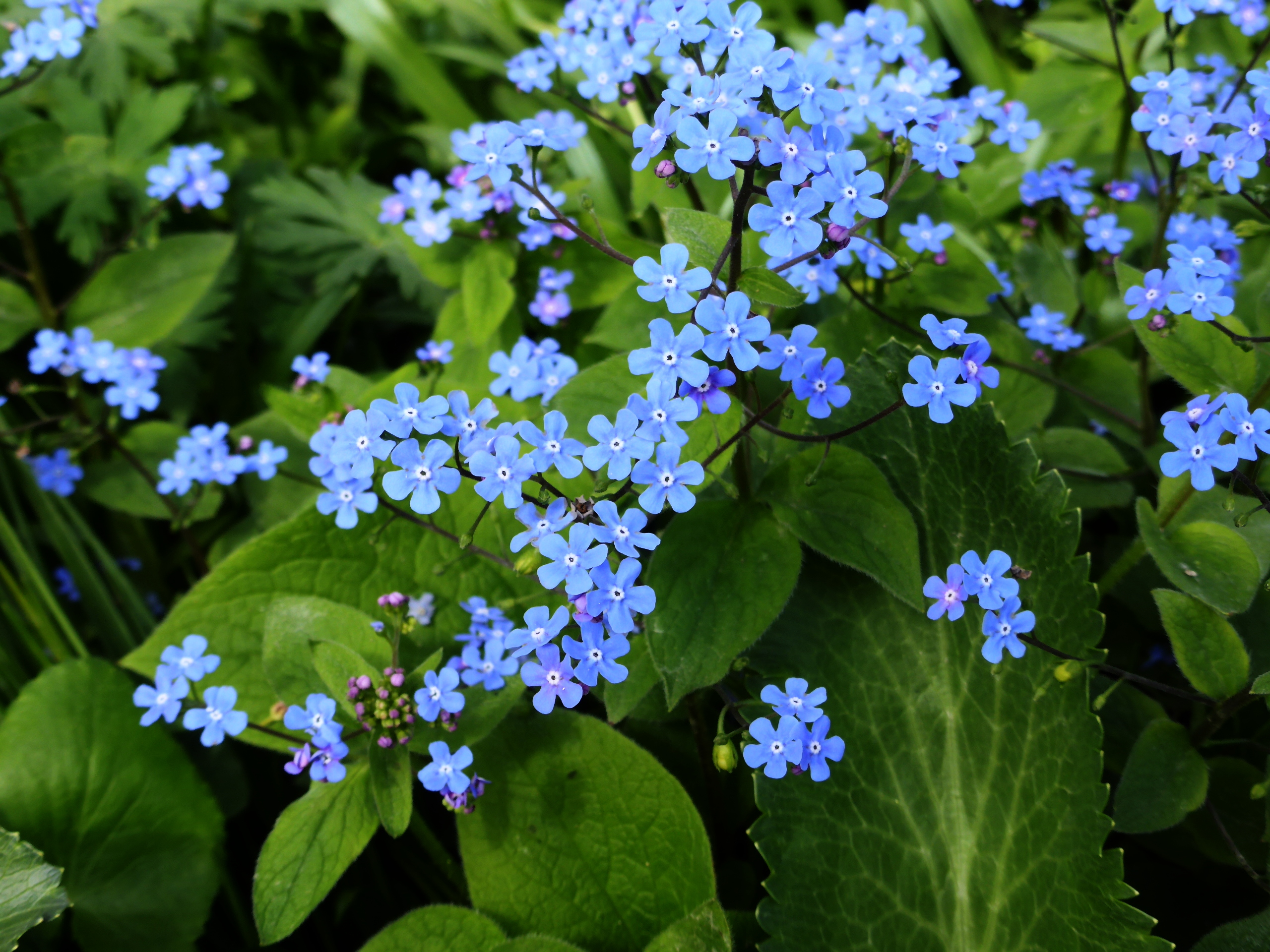
- Daylilies: Daylilies are a popular choice for sunny gardens, but they can also be grown in partial shade. They come in a wide variety of colors, and their long-lasting flowers can add a touch of brightness to any garden.
- Heuchera: Heucheras are known for their colorful foliage, which comes in a variety of shades, including red, orange, pink, and purple. They prefer moist soil and partial shade, and they can help to add some visual interest to a shady garden.
- Hosta (variegated varieties): Variegated hostas have leaves with different colors and patterns. They can add a touch of brightness and interest to any garden, and they can also help to break up the monotony of solid-colored hostas.
- Ligularia: Ligularia is a tall, bold perennial with large, heart-shaped leaves. It prefers moist soil and partial shade, and it can add a touch of drama to any garden.

- Moss phlox: Moss phlox is a low-growing perennial with small, white flowers. It prefers moist soil and partial shade, and it can help to fill in the spaces between hostas.
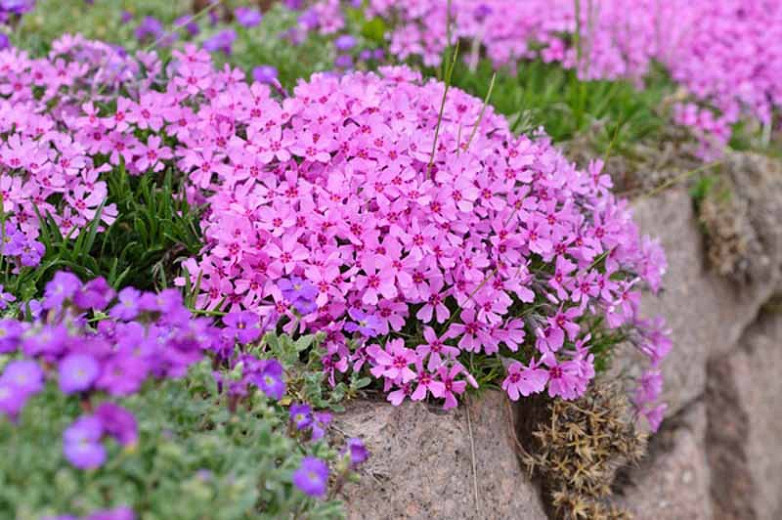
- Pansies: Pansies are cheerful little flowers that can add a touch of color to any garden. They prefer cool weather, so they're perfect for planting in the spring or fall. Pansies can be planted in full sun or partial shade, and they make great companions for hostas.
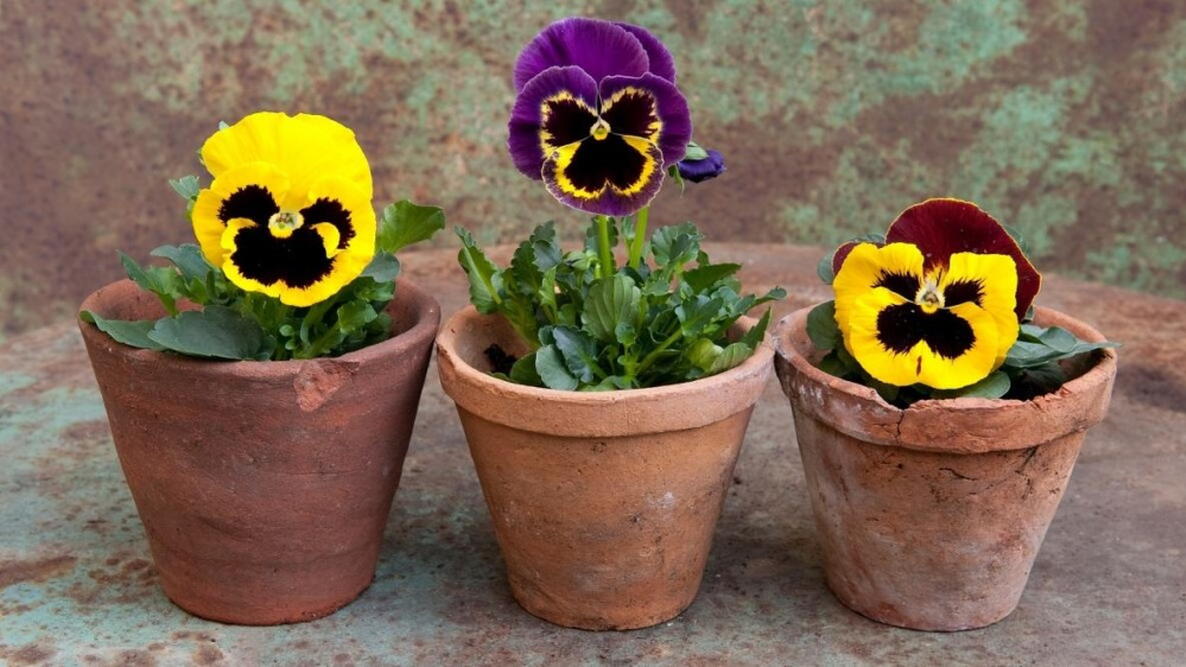
- Perennial geraniums: Perennial geraniums are a diverse group of plants that come in a variety of colors, sizes, and shapes. They prefer moist soil and partial shade, and they can make great companions for hostas.
These are just a few of the many great companion plants for hostas. With a little planning, you can create a stunning garden that will pop with color and interest.
Hostas are a popular choice for shady gardens, but they can sometimes look a bit plain on their own. That's where companion plants come in! There are many different plants that can be paired with hostas to create a beautiful and interesting garden.
Some of the best companion plants for hostas include:
- Ferns: Ferns add a delicate touch to any garden, and they work well with the large, bold leaves of hostas.
- Spring bulbs: Spring bulbs, such as tulips, daffodils, and crocuses, add a splash of color to the garden in early spring. They'll bloom before the hostas' leaves unfurl, so you can enjoy their beauty without them being hidden.
- Perennials: Perennials, such as astilbes, geraniums, and daylilies, provide color and interest throughout the growing season. They can be planted in front of or behind hostas, depending on their height.
- Groundcovers: Groundcovers, such as pachysandra, vinca, and creeping jenny, help to fill in the spaces between hostas and prevent weeds from taking over.
If you're looking for more information about hosta companion plants, I recommend visiting Gardenia Inspiration. This website has a wealth of information on the topic, including plant lists, planting tips, and care instructions.
FAQ of hosta companion plants
- What are the best companion plants for hostas?
Hostas are shade-loving plants that can tolerate a wide range of soil conditions. They are also relatively low-maintenance, making them a popular choice for gardeners of all skill levels. When choosing companion plants for hostas, it is important to consider their light and water requirements. Hostas prefer partial shade, so avoid planting them in full sun. They also need moist soil, so make sure to water them regularly, especially during hot, dry weather.
Some good companion plants for hostas include:
- Astilbe: Astilbe is a shade-loving perennial that blooms in late spring and early summer. It has delicate, fern-like foliage and spikes of pink, white, or purple flowers.

- Ferns: Ferns are another good choice for shady areas. They come in a variety of shapes and sizes, so you can find one to complement the size and style of your hostas.

- Coral bells: Coral bells are a low-maintenance perennial that blooms in early summer. They have brightly colored flowers that come in a variety of shades, including red, pink, orange, and yellow.

- Heuchera: Heuchera, also known as coral bells, is another low-maintenance perennial with brightly colored flowers. It is a bit more drought-tolerant than coral bells, so it is a good choice for areas that do not receive a lot of rain.

- Brunnera: Brunnera is a shade-loving perennial that has blue, heart-shaped leaves. It blooms in spring with clusters of blue flowers.

- What are some plants that should not be planted with hostas?
Some plants that should not be planted with hostas include:
- Japanese barberry: Japanese barberry is an invasive species that can quickly take over a garden. It has thorns that can be harmful to people and pets.
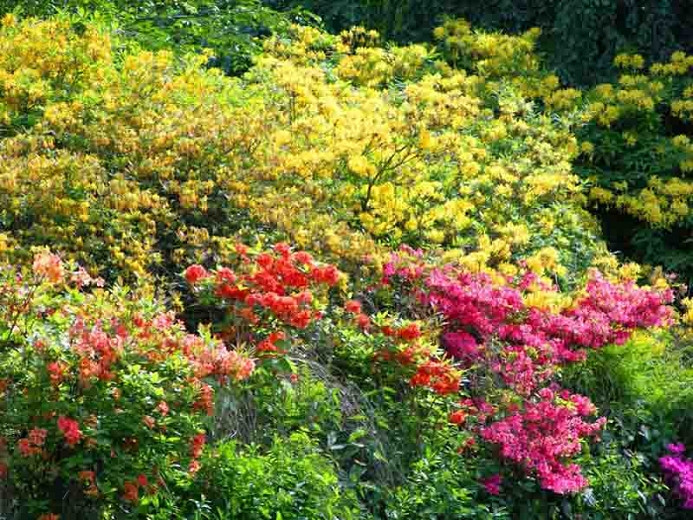
- Daylily: Daylily can be a bit aggressive and crowd out hostas. It also has shallow roots that can be damaged by digging.

- Vinca: Vinca is another aggressive plant that can quickly spread. It has shallow roots that can be damaged by digging.

- Ivy: Ivy can be difficult to control and can damage hostas by smothering them.
- Garlic mustard: Garlic mustard is an invasive species that can be harmful to native plants. It has a strong garlicky smell and can be difficult to get rid of.

- How far apart should hostas be planted?
Hostas should be planted 2-3 feet apart. This will give them enough room to grow and spread. If you are planting a large group of hostas, you may want to space them even further apart.
- How do I care for hosta companion plants?
The care requirements for hosta companion plants will vary depending on the specific plant. However, most companion plants for hostas prefer partial shade and moist soil. You should water them regularly, especially during hot, dry weather. You may also need to fertilize them once or twice a year.
- How do I prevent pests and diseases in hosta companion plants?
The best way to prevent pests and diseases in hosta companion plants is to keep them healthy. This means watering them regularly, fertilizing them as needed, and providing them with the right amount of sunlight and shade. You should also inspect your plants regularly for signs of pests or diseases. If you do find any problems, you can treat them with insecticidal soap or neem oil.
Image of hosta companion plants
5 different images of "hosta companion plants" from Pinterest:
- Astilbe: Astilbe is a shade-loving plant that blooms in late spring to early summer with delicate pink, white, or purple flowers. It can help to add height and interest to a hosta bed.

- Coral bells: Coral bells is another shade-loving plant that blooms in early summer with bell-shaped flowers in shades of red, pink, or white. It can help to add color and texture to a hosta bed.

- Lamium: Lamium is a low-growing groundcover plant that blooms in early summer with white, pink, or purple flowers. It can help to fill in the spaces between hostas and add a touch of color.
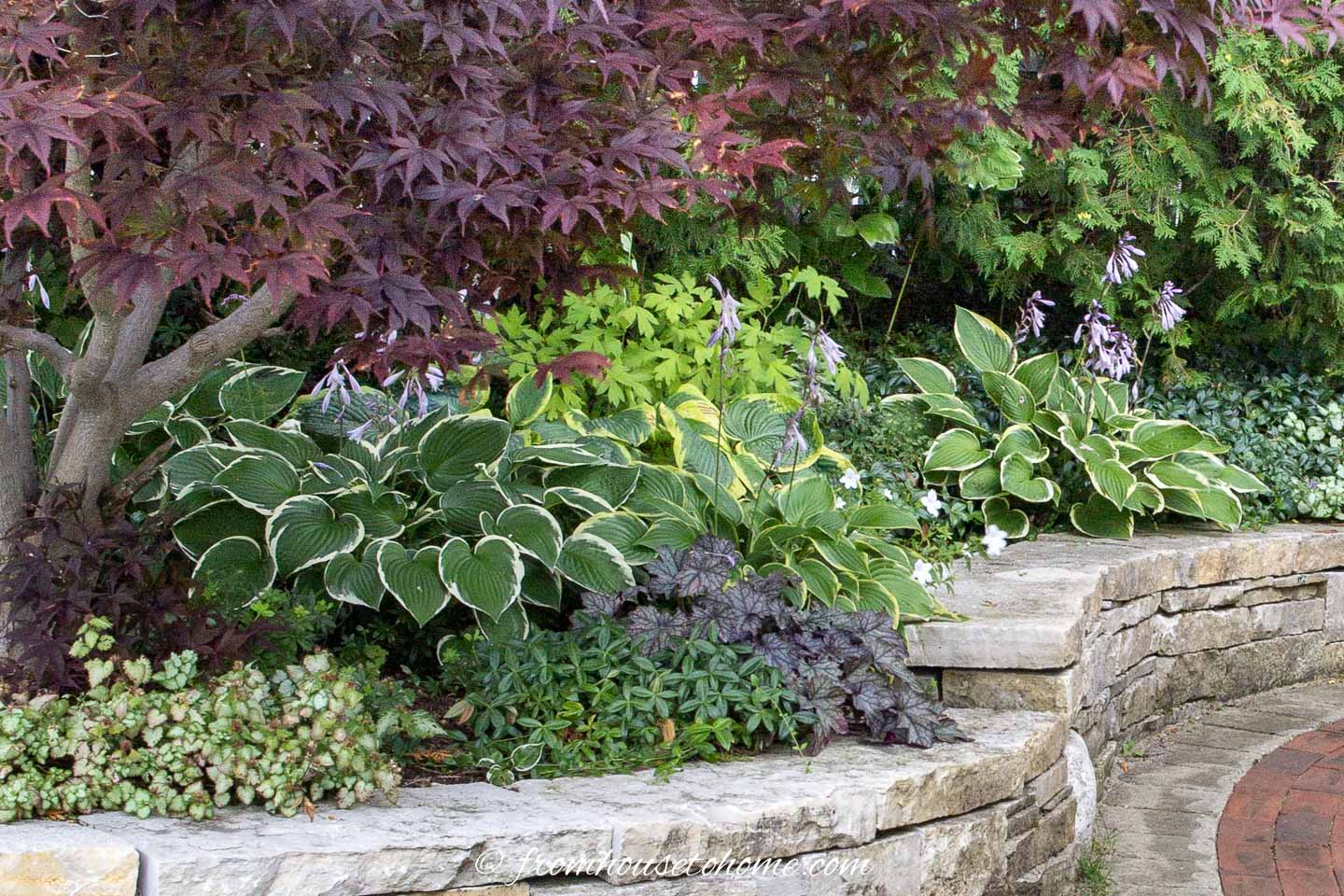
- Lupins: Lupins are tall, upright plants that bloom in late spring to early summer with blue, white, or purple flowers. They can help to add height and color to a hosta bed.

- Sedges: Sedges are low-maintenance plants that come in a variety of colors and textures. They can help to add interest and variety to a hosta bed.


Post a Comment for " Stunning Hosta Companion Plants That Will Make Your Garden Pop"